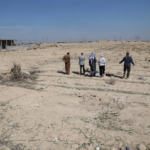Introduction
The roots of the current Russia-Ukraine conflict stretch far beyond 2014 or 2022. To truly understand the war, we must look back to 1967 and the historical, political, and cultural milestones that have shaped the region. This article highlights seven key events that forged the complex path toward today’s geopolitical crisis.

1. Soviet Control of Ukraine in 1967
In 1967, Ukraine was a Soviet republic, heavily influenced by Moscow’s central control. Political dissent was suppressed, and Ukrainian national identity was discouraged. While outwardly a loyal part of the USSR, seeds of resistance were already germinating underground through cultural movements and dissident voices.
2. The Rise of Ukrainian Nationalism in the 1970s–80s
Underground movements promoting Ukrainian language, culture, and autonomy gained strength during the later Soviet decades. Dissidents like Viacheslav Chornovil and the Helsinki Group laid the ideological foundation for independence. Though repressed, these movements shaped Ukraine’s political consciousness.
3. The Chernobyl Disaster (1986)
The catastrophic explosion at Chernobyl in northern Ukraine became a major turning point. The Soviet regime’s cover-up and mismanagement sparked widespread distrust, especially among Ukrainians. It fueled calls for transparency and contributed to the Soviet Union’s unraveling.
4. Ukraine’s Declaration of Independence (1991)
Following the collapse of the Soviet Union, Ukraine declared independence in 1991. This was a watershed moment. However, independence came with economic instability and lingering Russian influence, particularly in Crimea and the eastern Donbas region.
5. The 2004 Orange Revolution
Mass protests erupted after a rigged presidential election. Ukrainians demanded democratic reforms and closer ties to the West. The revolution successfully overturned the result and brought a pro-European government to power, further straining Ukraine-Russia relations.
6. Russia’s Annexation of Crimea (2014)
In 2014, following the Euromaidan uprising that ousted pro-Russian President Yanukovych, Russia invaded and annexed Crimea. This act was condemned internationally and marked the beginning of a new phase of open hostility, especially in eastern Ukraine.
7. NATO Tensions and the 2022 Invasion
As Ukraine sought NATO and EU integration, Russia viewed this as a direct threat. In February 2022, Russia launched a full-scale invasion of Ukraine. The invasion was the culmination of decades of unresolved tension, influenced by historical grievances dating back to 1967 and beyond.
Conclusion
Understanding the modern Russia-Ukraine war requires a long historical view. From Soviet control and suppressed nationalism to independence, revolution, and territorial annexation, these seven events reveal how decades of political friction and cultural identity struggles culminated in war. The road to Ukraine’s present conflict is paved with historical echoes, and only by acknowledging them can lasting peace be pursued.
Want to explore more about Eastern Europe’s transformation after the USSR? Check out our article on Post-Soviet Conflicts and the Rise of Modern Russia.









